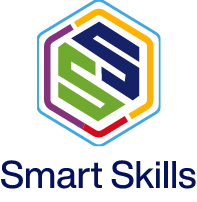Courses Offered
Selenium Automation with Java








SELENIUM-JAVA AUTOMATION TESTING COURSE CONTENT
•Introduction to Java
• History of java
• Comparison with C and C++
• Features of Java
• JDK,JRE,JVM overview
• JDK Directory Structure
• Basic Java Program through command prompt
• Download and install JDK/JRE
• Set Environment variables
• Download Eclipse IDE
• Coding standards followed in Eclipse
• Naming standards followed in Eclipse
• Features of Eclipse IDE
• Introduction to packages
• Need for packages
• package declaration in Java
• Import statement in Java
• static import in java
• Resolving name clashes in packages
• Classes and Objects
• Defining a class, instance variable and method in Java
• Defining a class, variable and method in Java
• Creating objects out of a class
• Method calls via object references
• Interfaces and Abstract classes
• Abstract and non-abstract methods
extends and implements keywords in Java
• Types of inheritance
• Super class and Sub class
• this keyword, super keyword in Java for inheritance
• Concrete classes in Java
• Aggregation and Association
• Compile time polymorphism –Overloading of methods
• Run time polymorphism –Overriding of methods
• Method Overriding rules and method overloading rules
• Introduction to Object class and it’s methods
• Protection of data
• Java Bean, POJO
• Getters/Setters
• Memory management in Java
• Heap
• Stack
• Garbage Collection
• Primitive Data types
• Data type Declarations
• Data type Ranges and its calculation
• Memory allocation for each Data type
• Variable Names Conventions
• Numeric Literals, Character Literals
• String Literals
• Arrays
• Array of Object References
• Enumerated Data types
• Non-Primitive Data types
• Flowchart for conditional statements
• If statement
• If-else statement
• If-else-if statement
• Switch statement
• String in switch case
• For loop
• While loop
• Do-while loop
• Unconditional Control Statements
• break statement
• labelled break statement
• return statement
• continue statement
• Scanner and BufferedReader
• Methods to get Primitive data types
• match method
• delimiter method
• findInLine method
• skip,close method
• useRadix method
• useLocale method
• IOException method
• Launching and debugging java code
• Breakpoints
• Debug perspective
• Stepping commands
• Trace point,Trigger point
• Breakpoints grouping
• Breakpoints sorting
• Role of access modifiers
• Private access modifier
• Role of private constructor
• Default access modifier
• Protected access modifier
• Public access modifier
• Access Modifier with Method Overriding
• variable
• variable memory storage
• Static variable
• Local variable
• Global/Instance Variable
• variable widening
• variable narrowing
• Constructor
• Default constructor
• Non-arg based constructor
• Parameterised constructor
• Difference between Constructor and Method
• Constructor chaining
• this and super method
• constructor overloading
• Singleton class
•Normal class vs singleton class
• Use of Singleton class
• JDBC Using Model Object and Singleton Class
• Collections.singleton method in Java
• Private Constructors and Singleton Classes in Java
• Java Singleton Design Pattern Practices
• String data type
• String declaration
• String Tokenizer
• String methods
• String types
• String memory allocation
• Manipulationsin string
• Interfaces and classes in String
• Declaration
• Instantiation
• Initialization of Java Array
• Single dimensional Array
• Multi-dimensional Array
• Anonymous Array
• Cloning an Array
• Need of Wrapper classes
• Autoboxing and Unboxing
• Primitive Wrapper Classes
• Utility methods of Wrapper classes
• valueOf and xxxValue methods
• parseXxx and toString method
•Need for Generics
• How Generics worksin Java
• Types of Generics
• Generic Type Class or Interface
• Generic Type Method or Constructor
• Generic Type Arrays
• Generics with Wildcards
• Unbounded Wildcards
• Bounded Wildcards
• Java Collection Framework
• Hierarchy of Collection Framework
• Collection interface
• Iterator interface
• Methods of collection interface
• List
• Set
• Queue
• Collections utility class
• Introduction to Map interface
• Methodsin Map
• Iterating a Map
• Map hierarchy
• Sorted Map
• LinkedHashMap
• TreeMap
• HashMap
• HashTable
• Exception types
• Usage of Try
• Usage of Catch
• Usage of Throw
• Usage of Throws
• Usage of Finally
• Built-in Exceptions,
• Creating own Exception classes
• Regular expression
• MatchResult interface
• Matcher class
• Pattern class
• PatternSyntaxException class
• Regex Quantifiers
• Regular Expression Character classes
• Regex MetacharactersFile operations:
• File Handling in Java
• Stream
• Java File Methods
• File Operations in Java
• File reader
• File writer
• Buffered Reader
• File permissions
• Method & Description
• Date Comparison
• Date Formatting Using SimpleDateFormat
• SimpleDateFormat Codes
• Date Formatting Using printf
• Date and Time Conversion Characters
• Sleeping for a While
• GregorianCalendar Class
• Serialization in Java
• Need for Serialization in Java
• Serializing an Object
• Deserializing an object
• Advantages and Disadvantages of Serialization in Java
• Practical examples of Serialization in Java
• Externalizable Interface
• Transient Keyword
• Serial Version UID
• Controversies of Serialization in Java
• Best Practices while using Serialization in Java
• Concepts of Thread
• Thread life cycle
• Creating threads using Thread class and Runnable interface
• Synchronization
• Thread priorities
• Inter Thread communication.
• Generics
• Enhanced for loop
• Varargs
• Enums
• Static imports
• C-lang printf()
• StringBuilder
• Metadata
• String in Switch Expression.
• Underscores Between Digits in Numeric Literals.
• Integral Types as Binary Literals.
• Handling multiple exceptions in a single catch block.
• Try-with-resources Statement.
• Automatic Type Inference in Generic object instantiation.
• JVM Memory Structure
• Heap area
• Method Area
• JVM Stacks
• Native method Stacks
• Program counter (PC) registers
• Working of Garbage Collector
• Memory leaks in Java
• Introduction to SQL
• Table creation
• SQL Insert
• SQL Update
• Applying Constraints
• SQL Syntax
• SQL Data Types
• SQL Operators
• SQL Database
• SQL Select
• SQL Clause
• SQL Delete
• SQL Join
• SQL Keys
• Establishing connection
• Types of JDBC driver
• JDBC-ODBC Bridge Driver,
• Native Driver,
• Network Protocol Driver, and
• Thin Driver
• Running query
• Extracting Result
• Find the product of digits in a number
• Coding Standards for Variables
• Coding Standards for Constants
• Java Bean Coding Standards
• Getter Methods
• Setter Methods
• Coding Standards for Classes
• Coding Standards for Interface
PRE-SELENIUM
• Types of Applications (Desktop, Web, Mobile, Hybrid)
• Software Testing Methods (Manual and Test Automation).
• Selenium Introduction
• Selenium Components
• Selenium vs. Other Testing Tools
• Advantages of Selenium
• Integration of Selenium with Other Tools
•Purposes and functionalities
• Understanding the components
• Selenium RC
• Selenium IDE
• Selenium webdriver
• Selenium Grid
• When to use Grid
• Desired Capability
• Downloading driver file
• Downloading selenium jarfile
• Chrome Browser Launching
• Safari Browser Launching
• InternetExplorer Browser Launching
• Installing FireBug and FirePath
• Firefox Browser Launching
• Idname
• classname
• xpath
• tagName
• linkText
• partialLinkText
• cssSelector
• Contains Xpath
• Text Xpath
• Text Contains Xpath
• Attribute with contains
• Following
• Ancestor
• Child
• Preceding
• Following-sibling
• Parent
• Self
• Descendant
• Relative Xpath
• Absolute Xpath
• Difference between Absolute Xpath and Relative Xpath
• Limitations in Absolute xpath
• Advantages of using Relative xpath
• Finding checkboxes count
• Checking the visiblity of Check Box
• Checking the properties of Check Box
• Identifying common locator for all checkboxes
• Checking toggled attribute
• Handling the Text Box
• Checking the visiblity of Text Box
• Checking the properties of Text Box
• Identifying common loactor for all TextBoxes
• Finding Textboxes count
• Handling the Radio Button
• Checking the visiblity of Radio Button
• Checking the properties of Radio Button
• Identifying common loactor for all Radiobuttons
• Finding radiobuttons count
• What are WebElements in Selenium
• Different types of WebElements
• Operations performed on the WebElements
• How to locate the WebElements on the web page
• Different WebElement methods
• Difficulties while handling webElemens
• Absolute XPath method
• Relative XPath method
• Identify by index
• Preceeding-sibling,Following-sibling concept
• Ancestor ,parent concept
• Common tagname(*) method
• Multiple attributes to locate an element
• Need for Desired Capabilities
• Different types of Desired Capabilities Methods
• Example for set capability method
• Setting the Property
• Getting the Property
•
• Navigate To Command
• Forward Command
• Back Command
• Refresh Command
• navigate method over get method
• Navigation by using JavascriptExecutor
• Fetching a web page
• Locating elements and sending user inputs
• Clearing User inputs
• Fetching data over any web element
• Performing Click event
• Navigating backward in browser history
• Navigating forward in browser history
• Refresh/ Reload a web page
• Closing Windows
• Closing Browser
• Handling Windows
• Handling Frames
• Handling Drag and Drop
• Drag and Drop
• Mouseover Action
• Right Click
• Double Click
• Performing Multiple Actions
• Accessing modifier keys using Actions class
• Switching into Alert
• Alert methods
• Types of Alert
• Handling the Alert
• Passing the inputsto Alerts
• Entering text into Alert
• Get the text present in Alert
• Handling the Window based popups
• Handling the Notification popups
• HAndling pop-ups using Robot class
• Handling the Login popups
• Chrome Options
• FirefoxOptions
• InternetExplorerOptions
• Need of Robot Class
• Methods to implement this class
• Mouse click using Robot class
• Limitations
• Copy Operations
• Cut Operations
• Paste Operations
• File Uploading
• Alert Handling
• Need for Waits
• Static waits
• Dynamic waits
• Implicit Waits
• Explicit Waits
• Fluent Waits
• WebDriver Waits
• Highlighting a WebElement
• Scroll the web page by pixel
• Scroll the web page by the visibility of the element
• Scroll down the web page at the bottom of the page
• Horizontal scroll on the web page
• Multiple Scroll
• ScrollBy coordinates
• Need for Frames
• Identifying a Frame
• Switching to Frames using Selenium WebDriver
• Different ways of switching
• Dynamic frames handling
• Frames Size
• Concept of Nested Frames
• Importance of Windows Handling
• Handling the Multiple Windows
• Windows Handling using Set
• Windows Handling using List
• Analyzing WebTable structure in DOM
• Handling multiple webtables in a page
• Dynamically changing WebTable handling
• Extracting values from webTable
• Analyzing the Tagnames
• Different Scenarios with WebTable
• Handling Dynamic Tables In Selenium
• Analyzing the Dynamic WebTable
• Analyzing the HTML Tags in Dynamic WebTable
• Different Scenario with Dynamic WebTable
• Need of Screenshot in Automation testing
• Capture Screenshot in Selenium
• Capture Full Page Screenshot
• Taking a Screenshot of a particular element of the page
• Taking a Screenshot with different file formats
• Random name generation for screenshots
• Finding images count in webpage
• Finding broken images count in webpage
• Finding broken image URL
• JavaScriptExecutor code to verify if image
• code to print desired output as per image
• Identifying URL
• Validating URL
• To Find a broken links
• HTTP response code
• Collect all the links in the web page
• Introduction to Apache Maven
• Maven Dependencies
• Maven Plugins
• Controlling The Build
• Maven Release Process
• Deploying to a Repository
• Using Snapshots
• Introduction To JIRA
• Test Management In JIRA (Zephyr)
• Advanced Search And Introduction To JQL (JIRA Query Language)
• Generating Reports In JIRA
• Introduction To JIRA Agile
• Data Driven Explanation
• Excel Types
• Apache poi-ooxml
• Interface , class, methods in apache poi-ooxml
• Read Data from excel
• Write data in excel
• update data in excel
• Creation of Automation scripts reading data from excel
• Page Object Model
• Advantages of POM
• Implementing POM
• Object repository creation
• Page Factory
• POM Annotation
• Getters and setters
• AjaxElementLocalFactory
• JUNIT Test Framework
• download and installation of junit
• JUNIT Annotation & API
• JUNIT Assert
• Create JUNIT Test Suite
• JUNIT Ignore Test
• JUNIT ErrorCollector
• JUNIT Parameterized Test
• JUNIT Vs Testng
• Execution metrics from JUNIT
• TESTNG with Selenium
• Advantages of TESTNG over JUnit
• TESTNG Annotation & API
• Create TESTNG Suite
• TESTNG Parameterized Test
• Parameters
• Data Provider
• Re-running failed Test Cases
• IretryAnalyzer
• IAnnotationTransformer
• TESTNG Assertions
• Hard Assert
• Soft Assert
• Run Multiple test case
• Customized,PDF,&Email Testng reports in selenium webDriver
• TESTNG Ignore Test
• Grouping in TestNG
• Cross browser execution
• BDD Introduction
• Cucumber Introduction
• How to download & Installation plugin
• Gherkin Language
• Feature files
• TestRunner with junit
• Step Definition
• CucumberOptions
• Software build process
• SDLC
• STLC
• Introduction to Testing
• Manual and Automation Testing
• Testing Techniques
• Testing principles
• Test scenario and Testcases preparation
• Software testing medhodologies
• Functional and non-functional testing
• Detailed explanation for Waterfall methodology
• Detailed explanation for Agile Methodology
• Defect raising using JIRA
• Your resume is arguably the most critical part of the modern job application process.
• A well-organized, tailored resume will increase your chances of landing an interviewwhile a
poorly written resume could get lost in the sea of applicants.
• We will help you to prepare your impressive resume with best specification of yourskill se

Arvind Shekar
ORACLE PL SQL
Lorem ipsum dolor sit amet, consetetur sadipscing elitr, sed diam nonumy eirmod tempor invidunt ut labore et dolore magna aliquyam erat, sed diam voluptua. At vero eos et accusam et justo duo dolores et ea rebum. Stet clita kasd gubergren, no
Previously Worked for



